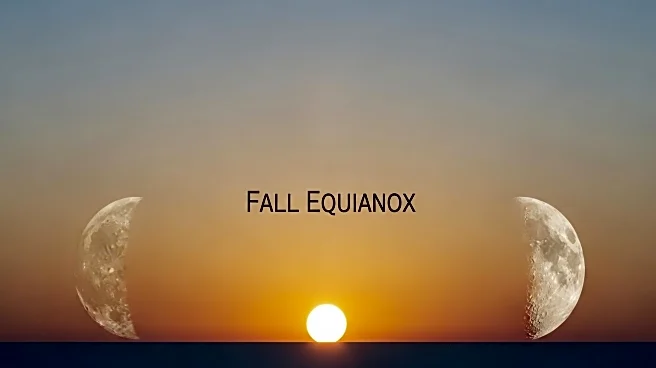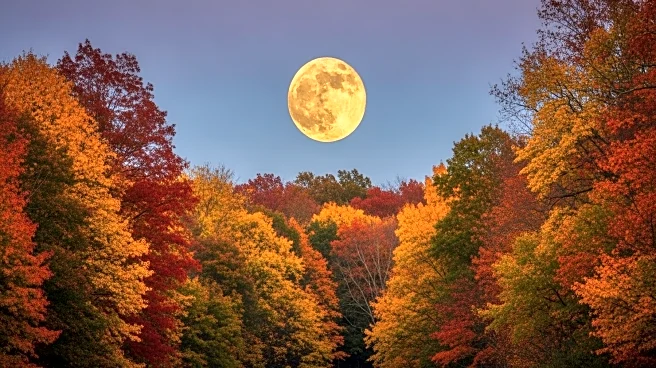What's Happening?
The autumnal equinox marks the beginning of astronomical autumn in the Northern Hemisphere, occurring at 2:19 P.M. EDT. This event signifies equal sunlight distribution across both hemispheres, transitioning from summer to autumn. The equinox is a key astronomical event, celebrated for its balance of day and night. Observers can view celestial objects like the Double Cluster in Perseus, which becomes prominent during this season.
Why It's Important?
The equinox is significant for its cultural and scientific implications, marking a change in seasons that affects agriculture, weather patterns, and ecological cycles. It influences various cultural traditions and festivals celebrating the harvest and the balance of nature. For astronomers and enthusiasts, it provides an opportunity to observe specific celestial phenomena, enhancing public interest in astronomy and science education.
What's Next?
As autumn progresses, the Northern Hemisphere will experience shorter days and cooler temperatures, impacting agriculture and energy consumption. Astronomers and educators may organize events to engage the public in observing celestial phenomena associated with the season. This period may also inspire cultural celebrations and activities centered around the themes of balance and change.











